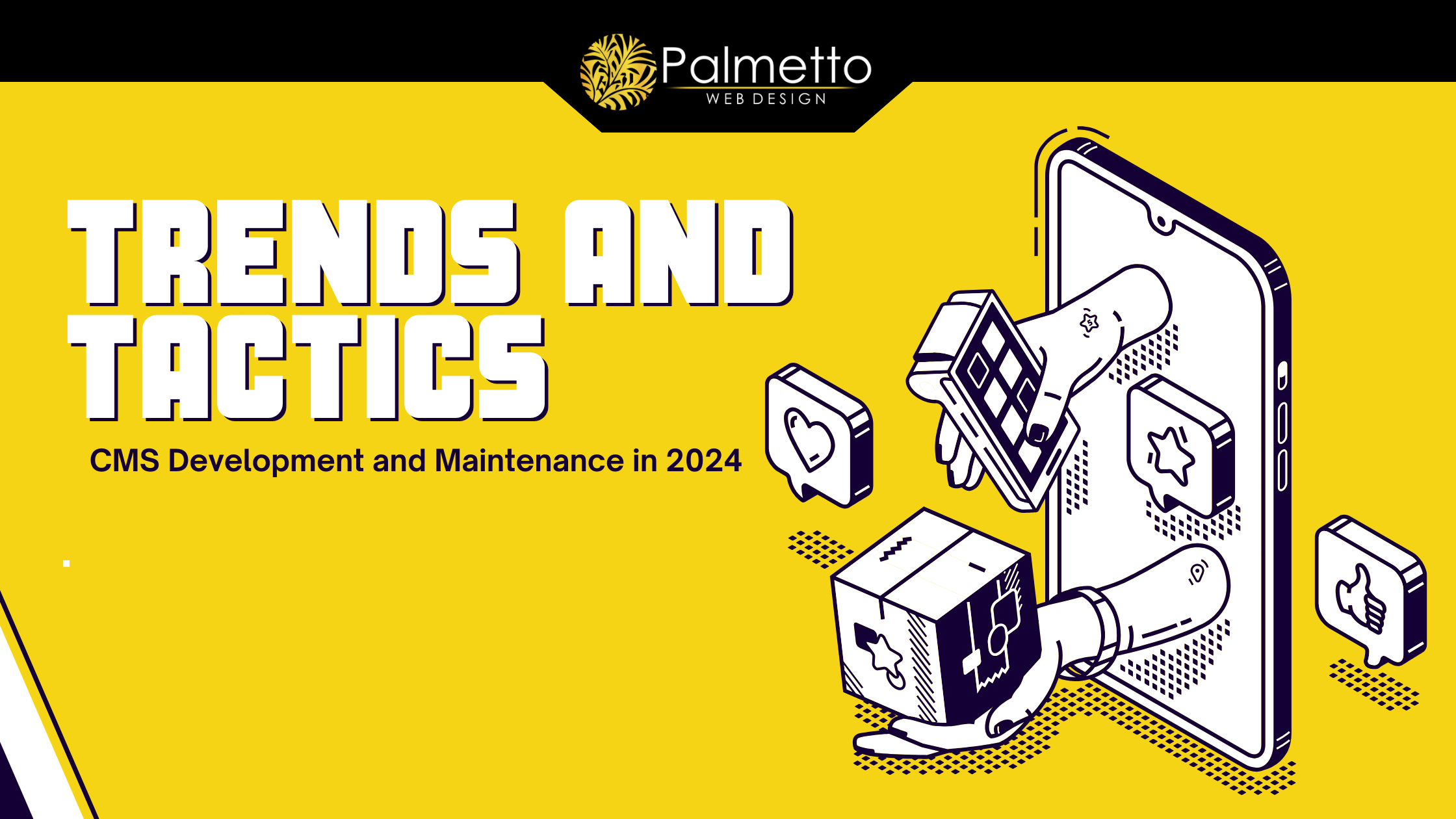Content Management Systems (CMS) have become an essential tool for businesses and organizations to manage and maintain their online presence efficiently. As we enter 2024 it continues to evolve, coming up with new trends and tactics that can increase the effectiveness of digital platforms.
Let’s Define It ………
A Content Management System (CMS) is an application designed for the efficient management of digital content. It enables the collaboration of multiple contributors in creating, editing, and publishing content.
Common functionalities
These include simplified content creation and formatting, centralized content storage, streamlined workflows for user roles and permissions, publishing tools for scheduled and controlled content release, and optimization features for enhancing user experience and gathering data-driven insights on content performance.
Trends in CMS Development
- Headless CMS: One significant trend gaining momentum is the adoption of headless CMS architecture. Unlike traditional ones, which tightly couple the backend and frontend, these decouples the content management and presentation layers. This approach provides greater flexibility and scalability, allowing organizations to deliver content easily across multiple platforms and devices.
- AI and Personalization: Artificial Intelligence (AI) is transforming the way content is managed and delivered. AI-powered CMS platforms are becoming quite popular, as they help in automating content tagging, optimizing content for search engines, and personalizing user experiences. In 2024, we can expect more such solutions to integrate AI capabilities, enhancing user engagement and conversion rates.
- Jamstack Architecture: Jamstack (JavaScript, APIs, and Markup) is getting noticed as a modern architecture for this development. It separates the frontend from the backend, resulting in faster load times, improved security, and enhanced scalability. These also enable developers to build high-performance websites and applications that can handle heavy traffic loads effortlessly.
- Low-Code/No-Code CMS: These solutions are increasingly sought after, enabling non-technical users to create and manage digital content easily. With user-friendly interfaces and pre-built templates, these platforms simplify content creation and management.
- Multilingual Content Management: As the world becomes a global village, catering to global audiences is essential. Multilingual CMS platforms are becoming more advanced, offering smooth translation and localization features. Using multilingual content opens up new market opportunities.
Tactics for CMS Maintenance
- Regular Updates and Security: Updating the software is important for maintaining a secure and stable digital presence. CMS providers frequently release updates and security patches to address vulnerabilities and improve performance and accounts as a basic tactic.
- Content Optimization: Regularly optimizing your content is vital for SEO and user engagement. Use analytics tools to identify underperforming content and update it to ensure best practices. Check carefully that your CMS allows you to perform A/B testing to refine your content’s effectiveness.
- Backup and Recovery: Strong backup and recovery strategies should be among the vital tactics of this management system. Regularly back up your website’s data, including content, images, and configurations. This ensures that you can quickly recover your site in case of data loss or a security breach.
- Performance Monitoring: Monitor your website’s performance to identify and address issues instantly. Slow-loading pages, broken links, and other performance issues can harm user experience and search engine rankings. Using monitoring tools to track performance metrics can boost up your site.
- User Training and Support: Invest in user training and support to ensure that your content creators and administrators are proficient in using it.
- Scalability Planning: As your website or application grows, it’s important to have a scalability plan in place. Ensure that your CMS can handle increased traffic and content growth. This may involve hardware upgrades, load balancing etc.
- SEO and Accessibility Compliance: Regularly review and update your content to maintain SEO best practices and accessibility compliance. Both of these factors are useful for attracting organic traffic and ensuring that your content is accessible to all users, regardless of their abilities.
- Content Archiving: Implement a content archiving planning structure to manage outdated or less important content. Archiving old content not only simplifies your site but also improves user navigation and ensures that search engines index your most relevant and current information.
- Security Audits and Penetration Testing: Conduct regular security audits and penetration testing to identify and minimize potential risks. Cybersecurity threats are in vogue nowadays, so staying proactive in safeguarding your CMS is essential.
- Disaster Recovery Plan: Develop a disaster recovery plan to handle unexpected events, such as server crashes, data breaches, or natural disasters. Having a well-thought-out plan can minimize downtime and data loss.
Lastly, it can be said that as businesses and organizations adapt to the evolving digital landscape, embracing these trends and tactics will be indispensible to stay competitive and provide outstanding digital experiences.
Is it possible to obtain a back-end that you can easily manage yourself, even without coding knowledge?
Visit us at Palmetto and Get a Free Quote Today !!
We dedicate ourselves to understanding what’s best for your business !




